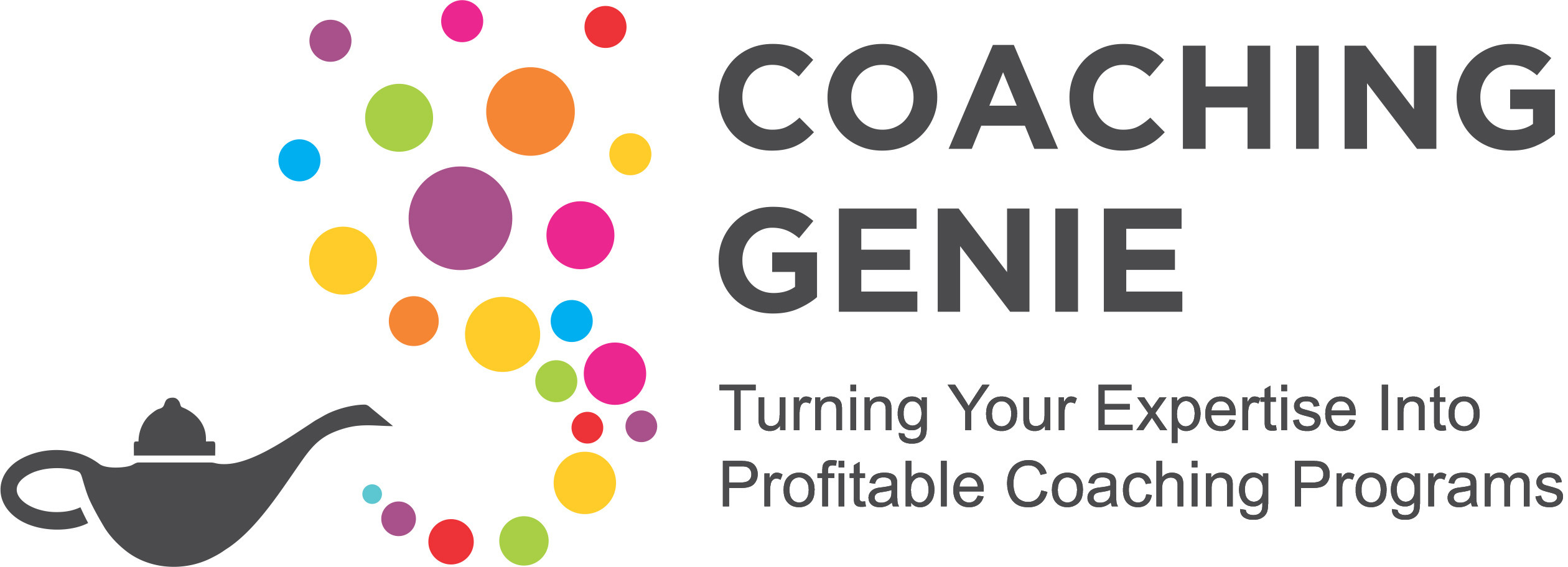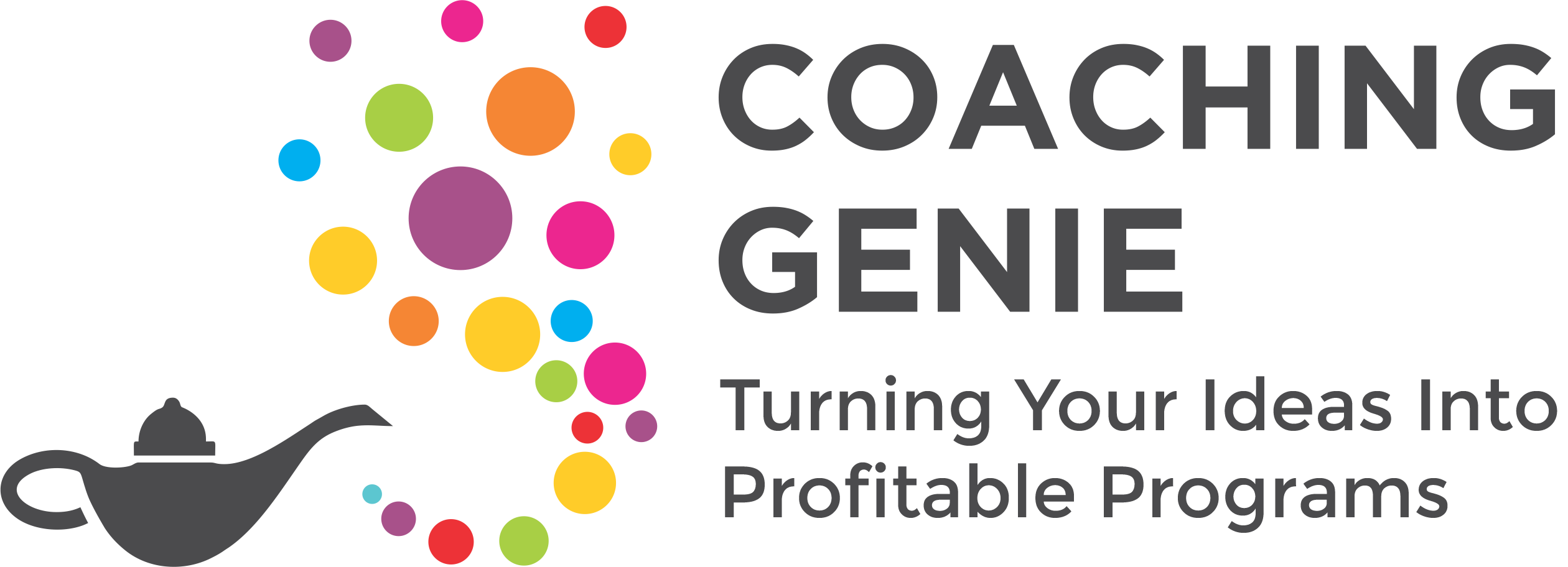 It’s important to start your group coaching program with a successful 1st coaching call. Establishing a few best practices will stage you for success. You’ll need to know what’s most important and understand how you’ll achieve those objectives. In this post I’ll cover the importance of these 4 key steps :
It’s important to start your group coaching program with a successful 1st coaching call. Establishing a few best practices will stage you for success. You’ll need to know what’s most important and understand how you’ll achieve those objectives. In this post I’ll cover the importance of these 4 key steps :
- Building rapport through a vulnerability
- Asking the “what” questions
- Covering the logistics
- Setting expectations
During your 1st coaching call, you might want to lecture, speak, or discuss module 1, but that’s not what your group members want. Your group members need to meet and connect with each other. It’s important for the members of the group to feel connected, so rapport should be your first goal.
In fact, 30%- 50% spent of your time is group program interaction and that interaction is super important in group coaching programs. So, how do you best establish rapport?
You can jump-start connections by using an ice-breaking activity. This allows people to become more comfortable with one another. Ice breaker themes vary so pick one that seems most relevant to your group and your group’s goals.
Once the ice is broken, the team is ready to learn more about the course. It’s a good idea to designate the remainder of your first group coach meeting as the orientation.
Starting your group coaching programs with orientation meetings not only gives your clients time to get to know one another, but you also help yourself out too. You can also begin your group coaching without actually starting your course because your focus is on building rapport and orientation. This technique allows you to fill your program and start your sessions while giving you another week to create your content!
While we discussed the importance of connection, it’s important to understand the difference between in-person rapport and building virtual rapport.
Difference Between In-Person Retreats and Virtual Coaching
The in-person connection can be powerful. You can look into one another’s eyes, retreat to a corner, connect, and hug. And if you are at a retreat you have all the time in the world to connect.
When you coach through using virtual platforms the connection isn’t the same. You’ll need to use the most impactful ice breaker into the 1st session. You’ll also want to leave your clients excited, hopeful, and riveted about the people they just met. They should look forward to the next session and you’ll need to do all this during a 1-hour webinar. It may sound daunting but it isn’t. Allow clients to connect and begin building rapport. Talk and teach less. Focus on orienting them to what’s next and your virtual group coaching program will be a huge success.
How to Build Virtual Rapport:
Step 1: Build Rapport Through Vulnerability
Depending on the course topic, people may need to be vulnerable. Many times, even top leaders need to express vulnerability and the only place to do so is with their peers. Vulnerability isn’t always easy to achieve within a group. So, it’s best to start by setting an example. Share something vulnerable about yourself.
For example, many people see all my successes but I’ve also had a lot of failures. I’ve had products and programs that didn’t go anywhere. Let your clients know you are there to not only share the successes, but also the failures. For instance, I often talk about getting panic attacks. Those very panic attacks made me walk away from a 1 million dollar business. Once I shared that about myself and I had a client share how her divorce impacted her business. Your clients will often open up and share their vulnerabilities because you first shared yours.
Step 2: Ask the “What” Questions
Once you’ve established rapport, you need to ask clients 2 key questions. When you do this you deepen the sense of connectedness:
- “What made you sign up for this program?”
- “What are you hoping to achieve?”
As the clients begin to answer these questions, they hear common challenges and the desire to achieve a similar outcome. This communication further unites this group and that unification will only strengthen throughout your coaching program.
If your coaching style is heavily rooted in goals this might also be a good time to set initial client goals. Each client can hear the others’ commitments and help focus the group on the desired outcome. Regardless of your coaching style, it is important to share the goals of the program. You can capture their progress by asking clients to use the journal feature in Group Coaching Genie to document their progress.
Step 3: Cover the Logistics
Once you’ve established a foundation for community, it’s important to discuss what’s coming in terms of content. You’ll want to cover logistical things such as:
- Schedule
- The program outline
- What to do if you get stuck
- Confidentiality agreement which you can send via email or send inside the welcome page.
Step 4: Set Expectations
Let everyone in the group know they need to have a contributory and collaborative mindset. From time to time you’ll have people sign up for your group coaching programs and they do not care to be a part of a group. They want to consume the content. In fact, I just finished a program and about 10-15 people did not show up for the live coaching calls. So, keep in mind, you will likely have a percentage of clients who want your content but they choose to consume it on their own. This is ok, but through the years I’ve realized clients receive what they put in. Lastly, make sure clients understand the need to do homework assignments. They need to work towards their goals between coaching calls to achieve the most out of your coaching program.
Leading your 1st coaching call can seem a bit unnerving. You can offset those jitters by building rapport and asking purposeful questions. When clients reiterate the reason they signed up for the course and what they hope to achieve it cements the purpose of joining your coaching program. Cover the logistics and set clear expectations and you’ll have finished your 1st coaching call. And remember, limit the tendency to teach or coach during the 1st call. The group wants to get to know one another.
Use the 1st call as your orientation and group meet and greet. This technique provides adequate space for the needed connectedness and gives your plenty of time to finish your coaching content before the next session!
Wishing you much success during your 1st coaching call!




0 Comments